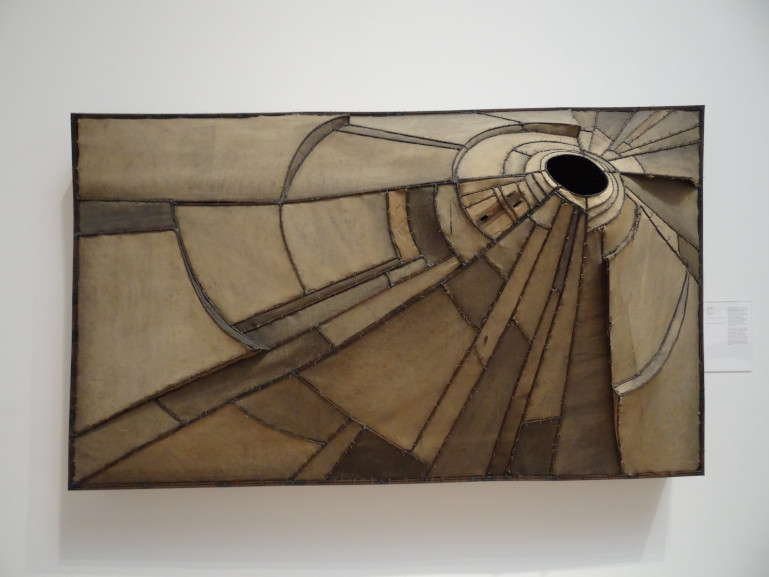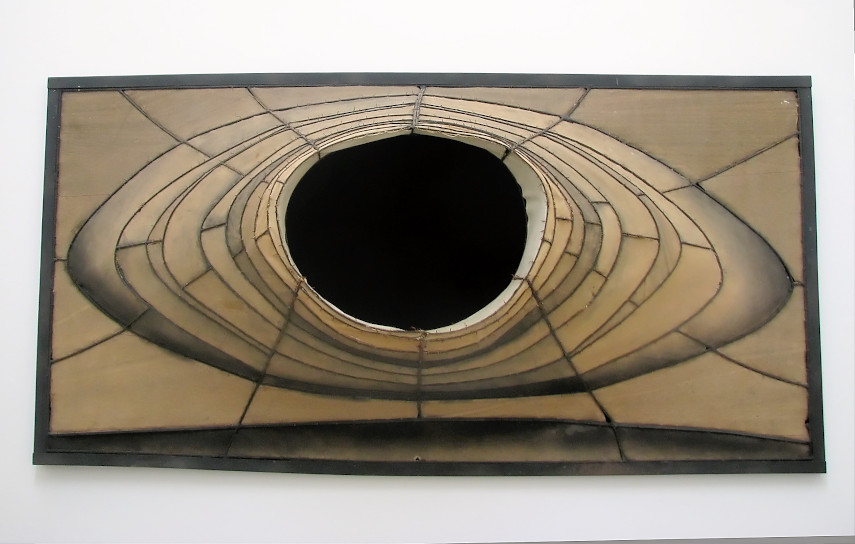Saying Goodbuy to Lee Bontecou, an Artist Celebrated for Her Pioneering Three-Dimensional Forms
Leo Castelli, one of the leading galleries in the 1960s New York, mainly championed (white) men such as Frank Stella and Robert Rauschenberg at the time. Nevertheless, their only female peer represented by the gallery was the outstanding Lee Bontecou, who recently passed away at the age of 91.
Her grandiose, mysterious wall-mounted constructions received public acclaim and institutional recognition before the artist practically withdrew from the New York art world a decade later. Bontecou employed unconventional industrial materials such as conveyor belts, mail sacks, sections of dryers, and new techniques to the full extent. These captivating, abstract reliefs generated fascination and speculation. One of the most prominent figures of the scene, Donald Judd, saluted her pioneering use of a three-dimensional form that was neither painting nor sculpture.

The Domains Of Lee Bontecou
Lee Bontecou attended Bradford Junior College (now Bradford College) in Haverhill, Massachusetts, and then the Art Students League of New York from 1952 to 1955, where she studied painting with Robert Brackman and sculpture with William Zorach. During the summer of 1954, she learned to weld at the Skowhegan School of Painting and Sculpture in Maine, and five years later, she received the Louis Comfort Tiffany Award.
In 1960, Leo Castelli showed Bontecou’s works in a group show together with those of other artists from the gallery roster. Later that year, she had her first solo show at the gallery. Bontecou's success grew with major acquisitions by the Whitney Museum and MoMA. In 1965, Bontecou married the painter William Giles, and their daughter, Valerie, was born soon after. In the 1970s, the family moved to a farm in rural Pennsylvania, as she felt fed up with living and working in the Manhattan neighborhood. In 1971, she began teaching at Brooklyn College.
Despite deciding to distance herself from the art world, Bontecou continued to teach through the 1990s while spending time in Pennsylvania, where she maintained a lively studio practice but showed infrequently. After several decades, her work was re-discovered through a 2003 retrospective co-organized by the Hammer Museum in Los Angeles and the Museum of Contemporary Art, Chicago, which included both work from the time of exhibiting frequently and an extensive body of work the artist has produced after retreating from the public inspired by outer space, industrial mechanics, marine life and the natural world.
In 2004, the American artist was elected into the National Academy of Design. Interestingly so, an image featuring Bontecou in her studio made by the Italian photographer Ugo Mulas in 1963, was used as the cover art for the 2007 album Ga Ga Ga Ga Ga by an American rock band, Spoon. After the 2010 retrospective exhibition at the Museum of Modern Art and a major survey of Bontecou's drawings and sculpture at the Gemeentemuseum Den Haag, interest in her work increased.

Tantalizing Alien-Like Forms
Bontecou was very much affected by WWII since both her parents joined the war effort; her mother wired transmitters for submarine navigation while her father sold gliders for the military. Later in life, her husband, William Giles, served as a medic in the Korean War. That is why she incorporated actual war material, such as helmets and gas masks, into her wall sculptures to evoke the brutality of combat atrocities and accentuate the human need for destruction.
The artist was continually dazzled by the industrial power of the man-made world, and her expression came to a peak with enormous relief she was commissioned by the architect Philip Johnson. This public work made in 1964 for the lobby of the David H. Koch Theater at Lincoln Center for the Performing Arts in New York City features Bonetcou’s signature materials and a part of a World War II bomber. At the time it was revealed, Life magazine described the piece as "a complex flying machine that might actually be able to get up off the ground and soar."
In 1971, Lee Bontecou presented at the time new works at the Leo Castelli Gallery that seemed like a departure from the reliefs that secured her such a reputation. The display included plastic, translucent sculptures of fish and flowers carved out of the Styrofoam found in the bulkheads of airplanes and canoes. The critics acquainted with her earlier work found the new pieces puzzling. This was Bontecou’s last solo show in New York for nearly three decades.

Unique Oeuvre of Lee Bontecou
Although appreciated for her domains, Lee Bontecou left the art world at the peak of her fame. However, she continued producing new works without any interest in showing them publicly. The closest tie the artist had with the city was teaching art at Brooklyn College for the next 20 years.
Throughout the 1970s, Bontecou’s work was embraced by the Feminist Art Movement. Some interpreted her imagery as featuring female genitalia and indicative of antagonistic sexuality in regards to her use of harsh industrial materials, cavities, and holes and, therefore, in sync with the expression of the female experience explored by the feminists. The artist herself rejected this association and saw it as inaccurate and restrictive.
However, the majestic fusion of nature and fiction, grotesque shapes, and the constant questioning of artistic conventions in terms of materials and presentation made Lee Bontecou a distinct figure and one of the prolific women who championed a truly unique avant-garde vocabulary that was hard to categorize.
Featured image: Lee Bontecou - Untitled, 1966. Image via Frans Vandewalle.
Can We Help?
Have a question or a technical issue? Want to learn more about our services to art dealers? Let us know and you'll hear from us within the next 24 hours.
